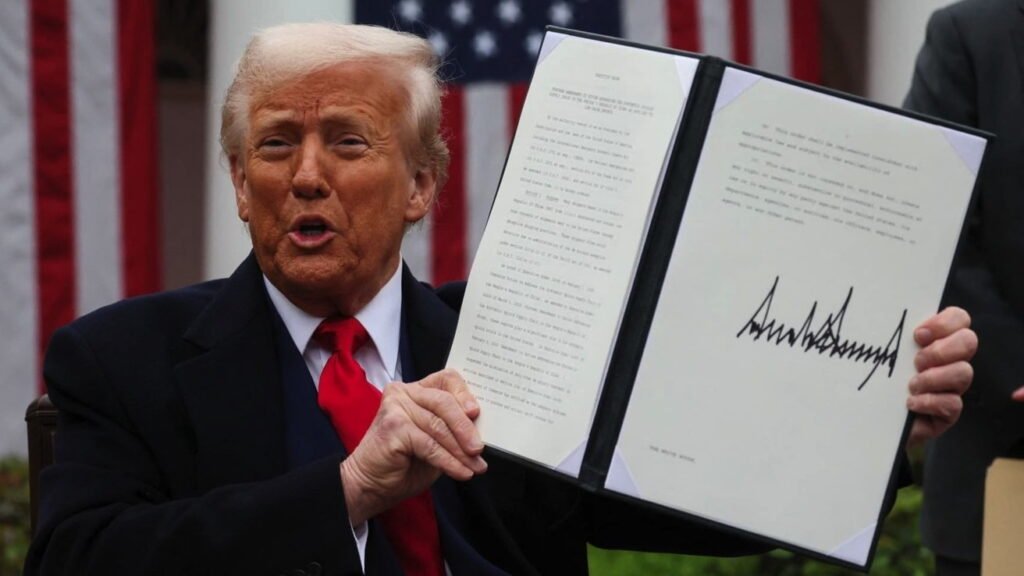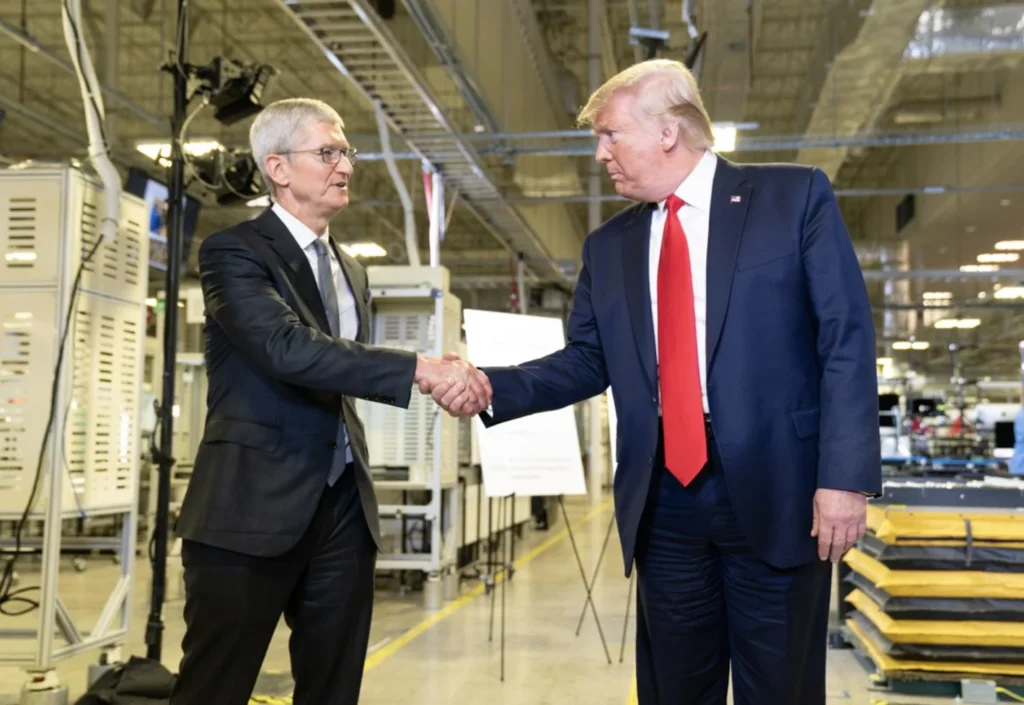The White House recently reignited an old debate — can iPhones be made in the U.S.? It’s a question that touches not only on technology but also on politics, economics, labor, and global trade. Apple’s iPhones are among the most iconic products in the world, but they’ve never been manufactured entirely on American soil. Now, the Biden administration believes that could change — though it won’t be easy.
In this article, we’ll explore the possibility of iPhone manufacturing in the U.S., why the White House is pushing for it, and what challenges stand in the way. We’ll also look at how this shift could impact Apple, American workers, and global supply chains.
Why the White House Wants iPhones Made in America

The U.S. government, especially under President Biden, has been advocating for bringing more manufacturing jobs back home. This is part of a broader effort to rebuild the country’s industrial base and reduce its reliance on foreign nations like China.
The recent push is tied to concerns about:
- National security.
- Supply chain disruptions (like during the COVID-19 pandemic).
- Rising tensions with China.
- Economic development in American cities.
The administration argues that making iPhones in the U.S. would create jobs, increase technological independence, and make supply chains more resilient. Apple, as one of America’s largest tech companies, is at the center of this conversation.
How iPhones Are Made Today
To understand why making iPhones in America is difficult, we need to understand how they’re made today.
iPhones are not produced in just one country. Instead, they are assembled using parts from dozens of countries around the world. Here’s how it breaks down:
- Design: Done in California by Apple engineers.
- Chip Manufacturing: The A-series chips are designed by Apple but manufactured by TSMC (Taiwan Semiconductor Manufacturing Company) in Taiwan.
- Screen: Often made by Samsung (South Korea) or LG (South Korea).
- Assembly: Done mostly by Foxconn, a Taiwanese company with factories in China, India, and now expanding into Vietnam.
Apple relies on this global network because of:
- Lower labor costs overseas.
- High-skilled factories capable of large-scale production.
- Established infrastructure for electronics manufacturing.
Can the U.S. Rebuild That Supply Chain?
Bringing iPhone manufacturing to the U.S. would mean rebuilding a supply chain that took decades to establish. That’s no small task. Here are some of the biggest challenges:
1. High Labor Costs
American workers are paid significantly more than workers in China or India. For example:
- A Chinese factory worker may earn $3-4 per hour.
- An American factory worker could earn $20-30 per hour or more.
That’s a huge difference. Building iPhones in the U.S. would likely make the product more expensive — unless Apple finds ways to automate most of the work.
2. Skilled Labor Shortage
Manufacturing electronics isn’t just about cheap labor. It also requires highly skilled technicians who can work with advanced machinery. Countries like China have millions of these workers, while the U.S. has far fewer.
3. Lack of Suppliers
The iPhone includes thousands of parts. Many of these are made by specialized suppliers in Asia. Rebuilding this network in the U.S. would require billions of dollars in investment and many years.
4. Regulatory and Environmental Hurdles
U.S. environmental and labor regulations are stricter than in many Asian countries. While this is good for worker rights and the environment, it also slows down factory construction and increases costs.
Is Apple Willing to Make the Shift?
Apple has made small steps toward increasing its presence in the U.S.:
- It already assembles some Macs in Austin, Texas.
- In 2021, Apple announced a $430 billion investment in U.S. operations over five years.
- TSMC, Apple’s chip manufacturer, is building a $40 billion chip facility in Arizona.
Still, Apple has not committed to making iPhones entirely in the U.S. It may be open to partial manufacturing or assembly, especially if pushed by government incentives or regulations.
What Would It Take to Build iPhones in the U.S.?

If Apple were to seriously consider iPhone manufacturing in the U.S., here’s what it would likely need:
1. Government Incentives
The federal and state governments could offer:
- Tax breaks for building factories.
- Grants for worker training.
- Tariff benefits for U.S.-made devices.
These incentives are already being offered to chip makers through the CHIPS Act — a bipartisan law aimed at boosting semiconductor production in the U.S.
2. Robotics and Automation
To reduce labor costs, Apple would likely invest heavily in automation. Advanced robotics can take over many tasks done by human workers, but building and operating them is expensive.
3. Workforce Development
The U.S. would need to train a new generation of factory workers, engineers, and supply chain managers. This could be done through technical schools, apprenticeships, and partnerships with community colleges.
4. New Supply Chains
Building a reliable supply chain within the U.S. would mean:
- Attracting suppliers to open American facilities.
- Creating transport and logistics systems for just-in-time delivery.
- Ensuring quality control across thousands of components.
Would Consumers Pay More for U.S.-Made iPhones?
One key question is whether people would pay extra for an iPhone made in America. Experts estimate that making iPhones in the U.S. could increase the price by $100 to $200 per device. For many customers, that might be too much.
However, some buyers — especially those concerned with national pride, ethical labor practices, or supply chain transparency — may be willing to pay more.
What’s the Timeline for Change?
Change won’t happen overnight. Experts say that bringing iPhone manufacturing to the U.S. could take 5 to 10 years, even with strong government support. It will require major shifts in strategy, logistics, and education.
That said, the seeds are already being planted:
- TSMC’s Arizona plant is expected to begin production by 2025.
- U.S. tech companies are already lobbying for more chip and electronics manufacturing incentives.
Global Impacts of Moving iPhone Manufacturing
If Apple were to move more of its iPhone production to the U.S., it would have ripple effects around the world:
- China would lose a major source of high-paying jobs.
- India and Vietnam, where Apple is expanding operations, could also see reduced growth.
- Global electronics prices could rise.
- Trade tensions may increase, especially with China.
Apple must walk a fine line between satisfying U.S. political demands and maintaining strong relationships with Asian suppliers.
Conclusion: A Complex but Possible Future
The White House’s claim that iPhones can be made in the U.S. isn’t far-fetched — but it comes with major hurdles. The cost, labor, infrastructure, and time required are immense. Yet, with rising geopolitical tensions and growing interest in “Made in America” products, this vision could become reality in the next decade.
For now, iPhone manufacturing in the U.S. remains a goal — not a guarantee. But it’s a conversation worth having, and one that could reshape the future of tech and jobs in America.
Also Read – Can You Spot AI Writing Style? Writers Say It’s Not That Easy






